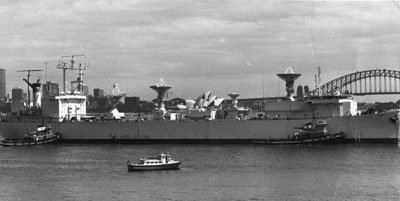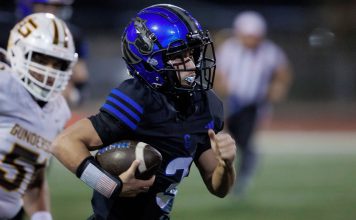Q. Did the U.S. Navy name one of its ships for San Juan
Bautista?
A. Although the village of San Juan Bautista is land-locked in
its San Benito County agricultural valley setting, the Navy did
indeed name one of its ships the USNS Mission San Juan after South
Valley’s very own Franciscan mission. The ship had a proud role in
serving America’s military as well as helping astronauts reach the
moon.
Q. Did the U.S. Navy name one of its ships for San Juan Bautista?
A. Although the village of San Juan Bautista is land-locked in its San Benito County agricultural valley setting, the Navy did indeed name one of its ships the USNS Mission San Juan after South Valley’s very own Franciscan mission. The ship had a proud role in serving America’s military as well as helping astronauts reach the moon.
The Mission San Juan belonged to the Mission Buenaventura Class fleet. The Navy ordered 27 of these ships to deliver fuel oil to American and Allied forces fighting overseas during World War II. The 523-foot San Juan was constructed by the Marine Ship Corporation, a firm based in Sausalito. Its keel was laid down on July 30, 1943 and it was launched into San Francisco Bay on Oct. 14 that year. The Maritime Commission accepted it as seaworthy on Jan. 31, 1944, and it went into service. The next year, the ship received the National Defense Service Medal.
Following the war, the ship was stationed in Mobile, Ala. It carried fuel to American operating bases during the Korean War. In 1958, the San Juan went out of service and was laid up in the Maritime Administration’s Reserve Fleet in Beaumont, Texas.
In October 1964, the Navy moved the San Juan to Quincy Mass., where it was docked in the General Dynamics Shipyard and converted into a missile range ship. The ship gained a new 72-foot section amidship and advanced electronic equipment was also added. The Navy gave the ship a new name, calling it Flagstaff in April 1965. Several months later, Navy administrators decided to rename it the Mercury. The ship began service in the Atlantic and provided an important communications link for America’s space program. It connected the Cape Kennedy control stations with Project Gemini astronauts flying in their capsules in orbit. In 1968, the ship was reassigned to the Pacific and helped link Apollo spacecraft with ground tracking stations.
After being decommissioned, the ship was sold for scrap in 1975.
Q. What is Morgan Hill pioneer Daniel Murphy’s connection to Lake Tahoe?
A. With last month’s fires that consumed much of Lake Tahoe’s wild lands, many Californian’s focused their attention on North America’s largest alpine lake region. And the lake has a historic South Valley connection through a pioneer who lived on a ranch that’s now the location of Morgan Hill.
The lake’s deep blue waters were first seen by non-indigenous people when explorers John C. Fremont and Kit Carson observed it on Feb. 14, 1844, from Red Lake Peak along what’s now Carson Pass. Fremont named it Lake Bonpland after Aime Jacques Alexandre Bonpland, a French botanist in his exploratory party. However, neither Fremont nor Carson actually walked its shore.
The following year a group of California-bound settlers became the first people to traverse the rugged Sierras by wagon train. Among the members of the Murphy-Townsend-Stephens party. was Daniel Murphy, a 17-year-old boy who proved to be an adventurous leader in the group.
During the winter ordeal, the young lad traveled ahead to check out the terrain for an easy route over the mountains. The teenager saw Lake Bonpland in the distance. Amazed by its vibrant color, Murphy decided to investigate and soon became the first non-indigenous person to walk along the shores of what’s now known as Lake Tahoe.
Q. What does Gilroy’s Christmas Hill Park have in common with “Tinsel Town?”
A. No doubt many people have wondered why the place where the world famous Garlic Festival is held has a name that brings up images of Santa Claus and sugarplum fairies. One explanation gives the 36-acre park something in common with Southern California’s movie capitol of Hollywood .
There are actually two explanations given for the park’s name. The least likely says that decades ago during the winter holidays, Gilroy residents use drove to the hill at night to view the city’s decorative illumination from afar. The more likely explanation says the park is named because its grounds were once abundantly covered with the toyon bushes (Heteromeles arbutifolia), a plant also called “Christmas holly” or “California holly.” The vegetation grows in chaparral regions such as Christmas Hill Park. It’s covered with the shiny green leaves and the scarlet berries that are a favorite way to decorate during the holiday season.
Interestingly, the toyon bush also once populated the chaparral hills surrounding Los Angeles. According to one story, Southern California settlers supposedly named their farming community “Hollywood” after the Christmas holly bushes found around their property.











